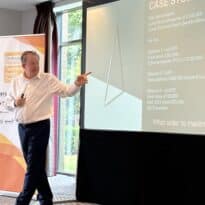The Lifetime ISA has a vital role to play in helping the self-employed save for retirement, but the government should overhaul the current restrictions to make it more appealing, says Hargreaves Lansdown.
It comes as the Government closes its consultation on the LISA, which has sought to determine whether the product is still fit for purpose.
Helen Morrissey, head of retirement analysis at Hargreaves Lansdown, said: “The Lifetime ISA is already making a huge contribution to people’s financial resilience, with the most recent HMRC figures showing a record of 755,000 LISAs were paid into during the tax year 2022/23. However, there is more that can be done. The Lifetime ISA has the potential to transform the retirement fortunes of groups such as the self-employed.”
The self-employed have long lagged other groups when it comes to saving for retirement, says Morrissey. They are excluded from auto-enrolment so there are far fewer contributing to pensions and those who do pay in don’t receive a contribution from an employer. In addition, many self-employed people are hesitant to lock their money away in a pension that they can’t access until at least the age of 55.
“Given that work and earnings can fluctuate it is understandable that many self-employed people are looking for something with a bit more flexibility,” she continued.
Data from Hargreaves Lansdown’s Savings and Resilience Barometer shows that just 21% of self-employed households are currently on track for a moderate retirement income. This compares to 36% of households overall.
Hargreaves Lansdown said the 25% bonus on contributions up to £4,000 per year has the same effect as basic rate tax relief in a pension, with the added benefit that any income taken is tax-free and funds can be accessed during difficult times, subject to an exit charge.
However, Hargreaves Lansdown said a reduction of the exit penalty and widening the ages at which you can have a LISA would help to make the LISA more attractive.
Morrissey said: “The charge on early access is a problem, as it not only removes the effect of the bonus but also a chunk of people’s hard-earned savings. Reducing this charge to 20% would remove this effect and give savers the comfort of knowing they won’t lose any of their own money.
“The second key reform is to widen the age at which people can open and pay into a LISA. At the moment, you can only open a LISA if you are between the ages of 18 and 39. Allowing people to open and contribute to a LISA up until the age of 55 would enable more people to build up a decent retirement income; notably those who become self-employed later in life.”
Main image: luke-chesser-CxBx_J3yp9g-unsplash






























